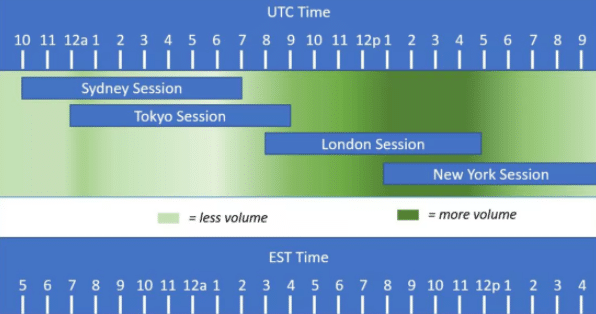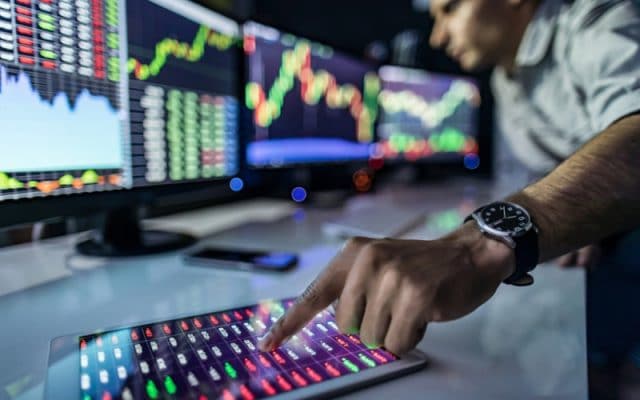Introduction
If you are an active trader, you must have noticed that the trading platform prices keep flashing for 24 hours a day, five days a week. Although the forex market appears to be active from Monday to Friday, markets do close daily. If so, then why do you see the trading platform flashing around the clock?

We need to backtrack a bit if we are to find a satisfactory explanation for this phenomenon. Usually, traders in certain regions have specific hours to trade because their markets open and close according to a set timetable.
People all around the world are participating in currency trading. In each of their regions, there is a significant currency trading center that houses brokers, market makers, etc. Some of the major trading centers for different time zones include Tokyo, New York, Sydney, and London.
How does the forex market achieve around-the-clock trading?
Each major currency trading center is open within its timetable that eats into one another. The forex market in New York City, for example, operates from 0800 hours to 1700hrs Eastern Standard Time (EST). If you convert this time to Coordinated Universal Time (UTC), the session will begin 1300hrs to 2200hrs UTC.
Another major trading session, the Tokyo session, starts at 1900hrs to 0400hrs EST, which is 0000hrs to 0900hrs UTC. The London session opens 0300hrs and closes 1200hrs EST, which 0800hrs to 1700hrs UTC. Lastly, the Sydney session starts at 1700hrs and ends at 0200hrs EST, 2200hrs to 0700hrs UTC.

Consider a trader who starts trading at 0800hrs EST in the New York session. When NYC brokers begin to close their trading desks for the day at 1700hrs EST, brokers in Sydney are just reporting for duty. Only two hours later, the Tokyo session also opens.
When the Sydney-based brokers fold up at 0200hrs EST, the Tokyo brokers will keep the market running till 0400hrs EST. Meanwhile, the London brokers report one hour earlier than the close of the Tokyo session. The London-based brokers will keep the market active until midday EST. By this time, the NYC brokers would have already spent close to four hours at their trading desks.
Explaining pre- and post-market hours trading
You are already aware that four currency trading centers dominate the world’s trading ecosystem. Because of eating into each other’s timetable, traders can buy and sell currency pairs every minute for five days. It is possible even when brokers in each session switch off their trading systems when the day ends.
Consider a London-based broker. This broker opens his trading desk at 8 am UTC when the London market opens and closes the desk at 5 pm UTC at the market’s close. For this broker, the hours before 8 am UTC are pre-market, and the hours after 5 pm are post-market.
Now, John is a trader who uses the services of the London-based broker. John can send orders to his broker at any time of the day, but his broker can only fulfill them when he opens the trading desk. In short, the trading activities outside the trading hours of your broker are what amount to pre- and post-market hours.
New developments in business and economy fuel after-hours trading
Knowledge of the trading hours is critical because it helps you know when most of the trading action occurs. It is because specific trading sessions are busier and involve massive scale movement of liquidity than others. The figure above shows that the London and New York sessions experience bigger trade volumes during a 24-hour trading session.
Some of the reasons for this event include news releases on economic data and company performances. Many news releases happen in the morning hours. For example, the US’s Bureau of Economic Analysis releases GDP data between 8 am, and 10 am. Many companies also release significant announcements during this period.
The data that these news releases share is critical to the value of the native currencies. The US GDP data that BEA releases affect the value of the US dollar. If a major company like Apple, Inc. announces major developments like the unveiling of a new iPhone, this also moves the greenback even if it is by a small margin.
Because this data often comes out when the London session is closing, and the New York session is just kicking off, this period experiences the largest trade orders. If the BEA is about to release US GDP data at 8:30 am, and the expectation is that the figures will be strong, traders might begin taking long positions in favor of the USD even before the US session opens.
At the same time, London-session traders will continue trading even after their session closes because of the many trading opportunities arising from the major event. The main reason why the London-NYC overlap sees the crazy trading volume is mainly that three of the world’s most liquid currencies come from Europe (EUR and GBP) and the US (USD).
Wider spreads, higher volatility
The London and New York sessions overlap provides the perfect illustration of pre and post-market hours trading. Before the market opens, the liquidity is low because not all traders are keen on placing anticipatory orders before actual trading begins. The low liquidity might slow down the movement of large transactions.
Because of the low liquidity, volatility is also relatively high. There is always a trader ready to take or make an order for everyone in a busy market. After-hours, the low participation rate means that one large-volume trade could generate a volatility spike capable of hitting your stop loss, no matter how careful you are.
The low participation rate also means spreads are wider. Spreads are the widest when the market liquidity is at its shallowest. Between 9 pm UTC and 12 am UTC, all of the major sessions are closed. The Sydney session opens at 10 pm UTC, but the liquidity is too shallow to service the entire forex market. These are the major risks that you might encounter when trading outside the market hours of significant trading sessions.




